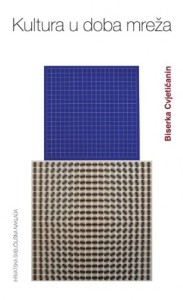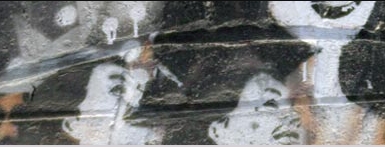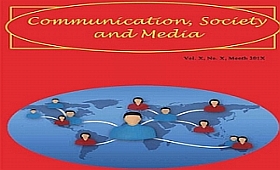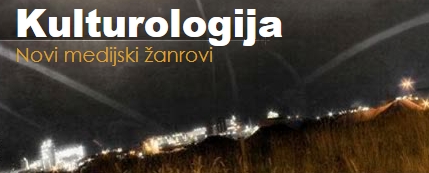 Thanks to the support of the Croatian Ministry of Culture, the European House, Tourist Board and the Department for EU integration, we continue for the third year with our performative project “World Image and Performativeness of Glocal Consciousness”. The link between “global” and “local” in the “Glocal” is our way of softening the borders of meeting “foreign” and “domestic” as a form of fighting xenophobia or fear of foreigners. We will present two simultaneous dancing and meditative performances: Irish dancer Paul O’Grady will perform traditional Irish dances, and Chinese Professor Wang Qian, lecturer at the Faculty of Philosophy in Zagreb will introduce Chinese meditative dance Tai-Chi. Their performances are expected to turn into workshops of animating the students of “Faculty of Educational Sciences in Osijek”, study in Slavonski Brod, as well as other interested observers at the town square “Ivana Brlić Mažuranić”, on Saturday, May 9, at 12 am.
Thanks to the support of the Croatian Ministry of Culture, the European House, Tourist Board and the Department for EU integration, we continue for the third year with our performative project “World Image and Performativeness of Glocal Consciousness”. The link between “global” and “local” in the “Glocal” is our way of softening the borders of meeting “foreign” and “domestic” as a form of fighting xenophobia or fear of foreigners. We will present two simultaneous dancing and meditative performances: Irish dancer Paul O’Grady will perform traditional Irish dances, and Chinese Professor Wang Qian, lecturer at the Faculty of Philosophy in Zagreb will introduce Chinese meditative dance Tai-Chi. Their performances are expected to turn into workshops of animating the students of “Faculty of Educational Sciences in Osijek”, study in Slavonski Brod, as well as other interested observers at the town square “Ivana Brlić Mažuranić”, on Saturday, May 9, at 12 am.
Scientists – participants: Dr. Kruno Martinac (Murdoch university, Melbourne), Ph.D Lino Veljak (Faculty of Humanities and Social Sciences, Zagreb), Assistant Professor MA. Vladimir Frelih and Art Assistant Domagoj Susac (Art Academy in Osijek, Osijek), Dr. Divna Vuksanovic (Faculty of Drama Arts, Belgrade), Dr. Dragan Calovic (Faculty for culture and media, Beograd), Ph.D Zdravko Palavra (ICT teacher, Daruvar), Dr. Jugoslav Gojkovic (J. Bencevic hospital, psychiatrist, Slavonski Brod) , and Ph.D Vesna Srnic (NO “Culture, media and education” – ARTHEA president, the author of the project). http://glocal-art.ning.com
Elaborating in an abstract and impersonal way, we start from the position that the performativity of the “World Image and Performativiness of Glocal Consciousness” is reflexive and critical, meditative art event, which is not preferring “Image” in itself, nor is rejecting it, at least not the way W.J.T. Mitchell talks in his book “What Do Pictures Want?” (93-96 pages).
In fact, Mitchell believes that the Images “live” because, apparently, we bring life to them or we iconoclasticly destroy that life in pictures … But we stand on the point of view that due to the reflection of a performative artwork there are no primitive fantasies (the types of “idol, fetish, totem”) that would include or exclude the Image, but contrary there is the anthropological establishing of ontological phenomenon of “to be here and now” (Dasain, Heidegger), which results in an artistic transpersonal existential actualization.
Mitchell states that the especially “totem” is collective representation, and totemic rituals are “the crazy guilt of social differentations” (page 99), which is an anthropological position between “natural” and “cultural” (page 101). Supported by the inscription of Durkheim’s allegations Mitchell believes that the “Image of the totem is happier than totem itself” (page 101), and so that totemism is an example of birth of Images (procreation), where the Image is “God” …
We believe that by the performativity of artistic event we can avoid birth or death of the “Image” as a fantasy monster, as a political coloration, and as far as Mitchell is fascinated by the monumentality of Images, by the gigantism of technology or as he says by the “dinosaur” – the totem, the animal of modernity, we see the “Image” or its Absence as contemplation in the space and time.
According to his obviously “necessary” fantasy thinking, Mitchell asks: “Do we create images or do they create us?” (page 105) In that sense this inevitability is supported by the explanation of totemism: “Totemism allows the image to assume a social, conversational, and dialectical relationship with the beholder, the way a doll or a stuffed animal does with children.” (page 106) Consequently, it is an example where Mitchell himself immaturely shows this dangerous infantilism in his theses!
The project “World Image and Performativeness of Glocal Consciousness” set the “World Image” in the spatial – temporal depletion zone with “No Images”, without infantile fantasies and desires, while keeping only the normal “middle existential path” (Media-Via).
Ph.D. Vesna Srnic
MV
http://glocal-art.ning.com













 Abstract
Abstract




















 Thanks to the support of the Croatian Ministry of Culture, the European House, Tourist Board and the Department for EU integration, we continue for the third year with our performative project “World Image and Performativeness of Glocal Consciousness”. The link between “global” and “local” in the “Glocal” is our way of softening the borders of meeting “foreign” and “domestic” as a form of fighting xenophobia or fear of foreigners. We will present two simultaneous dancing and meditative performances: Irish dancer Paul O’Grady will perform traditional Irish dances, and Chinese Professor Wang Qian, lecturer at the Faculty of Philosophy in Zagreb will introduce Chinese meditative dance Tai-Chi. Their performances are expected to turn into workshops of animating the students of “Faculty of Educational Sciences in Osijek”, study in Slavonski Brod, as well as other interested observers at the town square “Ivana Brlić Mažuranić”, on Saturday, May 9, at 12 am.
Thanks to the support of the Croatian Ministry of Culture, the European House, Tourist Board and the Department for EU integration, we continue for the third year with our performative project “World Image and Performativeness of Glocal Consciousness”. The link between “global” and “local” in the “Glocal” is our way of softening the borders of meeting “foreign” and “domestic” as a form of fighting xenophobia or fear of foreigners. We will present two simultaneous dancing and meditative performances: Irish dancer Paul O’Grady will perform traditional Irish dances, and Chinese Professor Wang Qian, lecturer at the Faculty of Philosophy in Zagreb will introduce Chinese meditative dance Tai-Chi. Their performances are expected to turn into workshops of animating the students of “Faculty of Educational Sciences in Osijek”, study in Slavonski Brod, as well as other interested observers at the town square “Ivana Brlić Mažuranić”, on Saturday, May 9, at 12 am. 






 by an actress Alma Prica and later followed by the discussion about her leftist work, psychoanalysis, melancholy and love.
by an actress Alma Prica and later followed by the discussion about her leftist work, psychoanalysis, melancholy and love.



